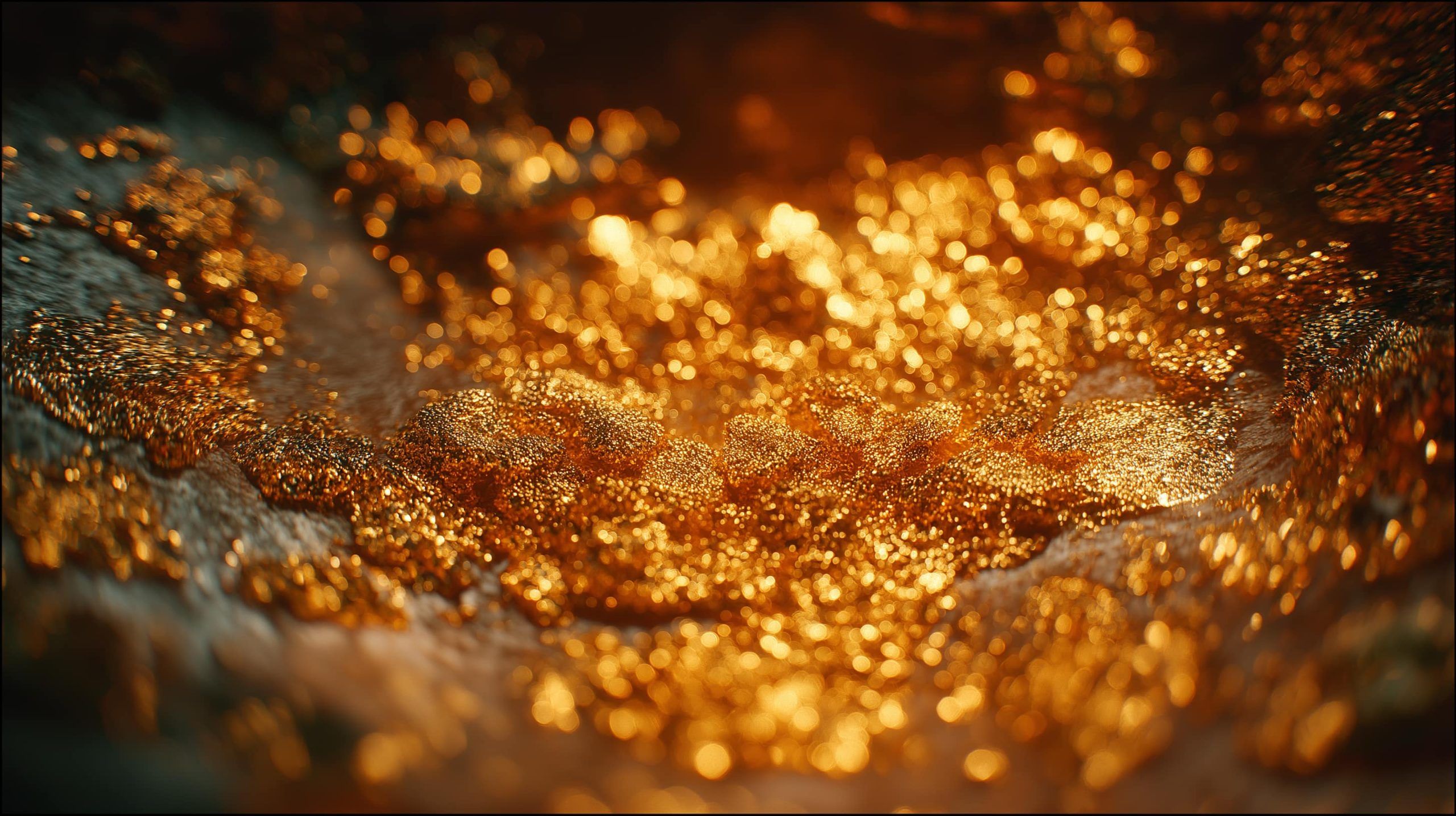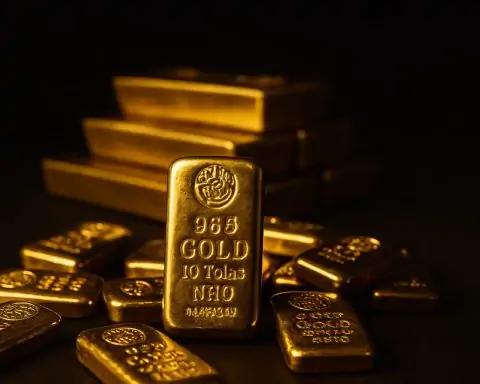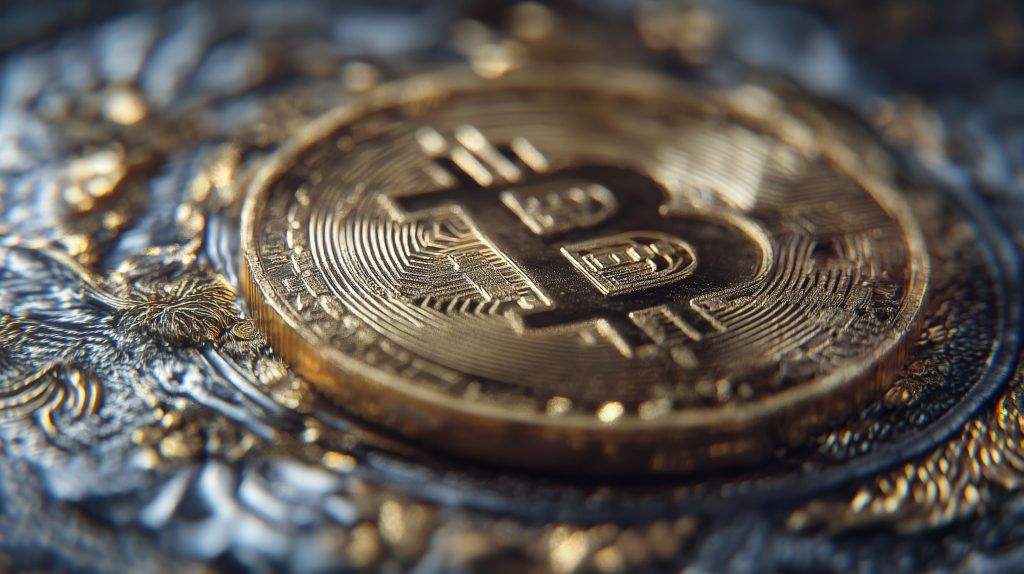- Gold shatters records: Gold prices surged past the $4,000/oz milestone for the first time, up over 50% year-to-date amid a flight to safety [1] [2].
- Silver nears 2011 highs: Silver rallied alongside gold – trading around $48–49/oz, its highest level in 14 years, on strong investment and industrial demand [3] [4].
- Platinum’s big comeback: Platinum has soared ~80% in 2025, outperforming other precious metals on the back of supply deficits and renewed investor interest [5] [6].
- Palladium & rhodium steady: Palladium inched higher (~$1,370) but remains far below its peak as EV adoption curbs demand [7]. Rhodium sits near $7,100/oz, about 50% higher than a year ago amid tight supply [8] [9].
- Safe-haven rush: Global economic turmoil and conflict – from war in Eastern Europe and the Middle East to U.S. political strife – have investors piling into precious metals as a refuge [10] [11].
- Central banks buying gold: Central banks continued massive gold purchases (over 1,000 tons expected in 2025), diversifying reserves away from the dollar and bolstering bullion demand [12]. China’s central bank, for example, bought gold for 11 straight months through September [13].
- Market outlook bullish: Analysts see little standing in gold’s way – Goldman Sachs hiked its 2026 price target to $4,900 [14] [15] – and prominent investors like Ray Dalio and Jeff Gundlach are urging heavier gold allocations (15–25% of portfolios) as protection [16] [17].
Market Overview: Record Rally and Price Movements
Investors queue outside a bullion shop in Sydney as gold prices hit all-time highs. Gold’s historic rally went into overdrive this week, breaking above $4,000/oz for the first time. On Tuesday Oct 7, U.S. gold futures surged past the $4,000 mark and settled at $4,004.40, after touching an intraday high of $4,014 [18] [19]. Spot gold closed just shy of the milestone around $3,986, itself a record high [20]. By Wednesday Oct 8, the momentum continued – spot gold jumped another ~1.2% to about $4,032/oz and futures climbed to $4,055 [21], cementing gold’s status as one of 2025’s top-performing assets (up 53% year-to-date) [22].
Silver, often gold’s high-beta cousin, mirrored the move with some volatility. After a slight pullback on Oct 7 (spot silver dipped ~1.4% that day to ~$47.9 [23] [24]), the metal rebounded strongly. By Oct 8, silver leapt to $48.6/oz [25] – closing in on the psychologically important $50 level and marking its highest price since 2011 (when silver briefly hit a record near $49 [26] [27]). Silver is now up roughly 68% in 2025, buoyed by both safe-haven investment and robust industrial demand. “Silver is making a move higher in response to expectations of lower rates, while a tight supply market is helping maintain an upward bias,” noted one analyst [28]. In fact, silver demand has outstripped supply for five consecutive years, creating a structural deficit that underpins its rally [29] [30].
Other precious metals joined the upswing. Platinum prices have risen in tandem with gold’s climb – touching about $1,640/oz on Oct 8 [31] – and the metal has soared ~80% year-to-date [32]. Although still well below its 2008 record high ($2,250), platinum’s resurgence reflects tight supply and bargain-hunting. “Platinum is just catching up to gold,” says Ritesh Jain of Pinetree Macro, noting it used to trade higher than gold and now looks undervalued by comparison [33] [34]. Severely constrained output in South Africa (due to flooding, power outages, and water shortages) drove platinum production down ~24% at times this year, contributing to an estimated 850,000-ounce supply deficit – the third annual shortfall in a row [35] [36]. This supply squeeze, combined with recovering jewelry and industrial demand, has set the stage for one of platinum’s strongest years in decades.
Palladium and rhodium – key platinum-group metals used in auto catalysts – saw more modest moves. Palladium prices ticked up to around $1,350–1,380/oz this week [37], even hitting multi-month highs, but the metal remains roughly 50% lower than its peak in 2021. Auto industry shifts are weighing on palladium’s longer-term outlook, as the rise of electric vehicles erodes demand for gasoline-engine catalytic converters. Consultancy Metals Focus expects palladium’s average price to fall about 5% in 2025, noting that a growing surplus and ample above-ground inventories (covering ~14 months of demand) have “undermined investors’ willingness to hold” the metal [38] [39]. Rhodium, by contrast, has quietly climbed amid niche demand and scarce supply. The thinly traded metal – prone to wild spikes – is currently hovering around $7,075/oz, nearly 50% higher than a year ago [40]. Reduced output from South African mines pushed the rhodium market into deficit this year, drawing down stocks to their lowest level in 40 years [41]. Still, analysts caution that rhodium’s volatility remains high, with even small shifts in physical demand causing outsized price swings [42].
Safe-Haven Demand Soars on Economic and Geopolitical Turmoil
Multiple converging crises have unleashed massive safe-haven flows into precious metals. “The rally is unbelievable – it’s telling us that something bad is happening and we should be nervous,” observed Dan Smith of Commodity Market Analytics [43]. Investors worldwide are seeking protection amid a climate of exceptional uncertainty. Chief among the worries are geopolitical conflicts: Russia’s war in Ukraine (Europe’s largest conflict since WWII) rages on, and unrest in the Middle East has escalated. In recent weeks, fighting between Israel and Hamas in Gaza expanded to include airstrikes involving Iran and Yemen, alongside disruptions to maritime trade [44]. These widening conflicts have greatly elevated global risk perceptions, driving demand for tangible assets like gold that tend to hold value during war and crisis.
At the same time, political dysfunction and economic anxiety in major economies are adding fuel to the fire. In the United States, a government funding impasse triggered a federal government shutdown on October 1, which by this week entered its second week with no resolution in sight [45]. The shutdown has not only underscored U.S. political instability but is also skewing economic data – key indicator reports are delayed, leaving investors “to rely on secondary, non-government data” to guess the Federal Reserve’s next moves [46]. This policy fog, combined with lingering inflation fears and a growing U.S. deficit, has shaken confidence in traditional assets. “Rising uncertainty levels tend to fuel gains in the gold price and we are seeing this theme play out again,” noted Tim Waterer, chief market analyst at KCM Trade [47]. Indeed, fear of missing out on the gold surge has become a factor unto itself, as more investors pile in, extending the momentum [48].
Beyond Washington, investors are monitoring turmoil in other economies. In Europe, growth remains sluggish and political strife is evident – France, for example, has been gripped by fresh turmoil (reports of protests and political uncertainty) that has rattled its bond and currency markets [49]. Japan is also in focus due to political changes at the top; upheaval there has weakened the yen, historically boosting gold in yen terms and globally. “Usually one or two risk drivers move the gold price,” observed BNP Paribas analyst David Wilson, “but right now everything that is a traditional gold driver is happening” all at once [50]. These include concerns about trade wars – President Donald Trump’s renewed tariff regime has upended global trade flows, introducing stagflationary pressures and undermining confidence in the U.S. dollar [51]. Tariff-related inflation angst is spreading: new U.S. import tariffs (e.g. a 50% duty on copper starting August) and retaliatory moves from China have companies on edge [52] [53]. With China weaponizing its dominance in critical materials (like imposing export curbs on rare earth elements used in electronics and defense) [54] [55], a broad sense of economic insecurity is driving investors into safe-haven assets en masse.
Central Banks Fueling Demand – Gold Purchases at Record Pace
Another pillar of support for precious metals has been voracious central bank buying of gold. Around the world, central banks are diversifying reserves away from currencies (particularly the U.S. dollar) and into bullion – providing a significant underpinning to gold demand. 2023 saw central banks accumulate the most gold on record, and 2025 is on track for another banner year: according to Metals Focus, official sector gold purchases could exceed 1,000 metric tons in 2025, marking the fourth straight year of massive buying [56]. “Central banks worldwide are on track to buy 1,000 metric tons of gold in 2025,” the consultancy noted, as many countries seek to reduce reliance on dollar-denominated assets amid geopolitical tensions [57]. This strategic shift has undeniably helped buoy gold prices to all-time highs.
China has been a leading player – the People’s Bank of China (PBoC) extended its gold-buying spree for an 11th consecutive month, according to its latest data. In September alone, the PBoC added more gold to its reserves, part of a steady accumulation that began in late 2022 [58]. China’s authorities have explicitly aimed to build a war chest of gold, both to hedge against Western financial sanctions and to bolster the yuan’s credibility. Other emerging market central banks are in the hunt as well: Turkey, Kazakhstan, and Middle Eastern states have all added to their gold reserves in recent months (after a brief summer pause in buying [59]). Notably, Poland’s central bank has emerged as one of the biggest gold bulls – it bought over 60 tons in the past year (through August) and now holds 515+ tons in reserves [60] [61]. The National Bank of Poland announced plans to raise gold to 30% of its reserve assets, with Governor Adam Glapiński calling gold “the only safe investment for state reserves” in today’s turbulent times [62] [63]. Poland’s holdings already make up about 22% of its reserves, and further purchases are expected “depending on market conditions” [64] [65].
Monetary policy signals from the major central banks are also working in gold’s favor. The U.S. Federal Reserve, after an aggressive tightening cycle, has shifted to a more dovish stance as economic pressures mount. Rate cuts are back on the table – traders are now pricing in a 25 basis point Fed rate cut at the upcoming October meeting, with another cut likely in December [66]. The mere anticipation of Fed easing has weakened the dollar and bolstered the appeal of non-yielding assets like gold [67]. “Market dynamics of lower U.S. interest rates and the ongoing government shutdown are still working in favor of gold,” explained KCM Trade’s Tim Waterer [68]. Low rates reduce the opportunity cost of holding gold (which pays no interest), making it a more attractive store of value. Likewise in Europe, the prospect of looser policy – amid recession fears – has kept the euro subdued and added to gold’s shine in euro terms. Central banks themselves recognize gold’s role in this environment: as one LPL Financial strategist observed, “a weaker dollar, the resumption of the rate-cutting cycle, U.S. deficit concerns, tariff-related inflation, and steady foreign central bank buying” have created a perfect storm of support for gold prices [69]. In short, both the buyers of last resort (central banks) and private investors are in sync, accumulating gold as a hedge against monetary uncertainty and currency debasement.
Mining Industry Updates: Supply Constraints and Rare Earth Moves
On the supply side, the mining industry is grappling with challenges and opportunities that are impacting precious metals markets. In the gold mining sector, production disruptions in parts of Africa are in the spotlight. Mali, one of Africa’s top gold producers, has seen significant turmoil as the ruling junta pushes for greater control and revenue from foreign-operated mines. In a landmark decision earlier this year, a Mali court stripped Barrick Gold of operational control of its giant Loulo-Gounkoto mine complex for six months, appointing a state administrator amid a tax and royalty dispute [70] [71]. This unprecedented intervention – effectively barring Barrick from running one of the world’s largest gold complexes – underscores the rising resource nationalism in West Africa. Barrick has had to exclude the Mali mine from its 2025 output forecasts, putting at risk over $1 billion in revenue and contributing to a ~23% drop in Mali’s industrial gold output last year [72] [73]. Similarly, other companies like B2Gold and Resolute Mining have faced pressures or strikes in Mali and neighboring countries, which could constrain near-term supply. While these local issues haven’t yet caused a global gold shortage, they add supply-side uncertainty that can support prices at the margin – especially with global demand so strong.
For the platinum-group metals (PGMs), South Africa’s mining struggles are a major factor behind this year’s price action. South Africa is the primary source of platinum and rhodium, and a key producer of palladium, but 2025 has been fraught with operational hurdles. Eskom’s power outages, water rationing, and even unusually heavy rains hampered mining operations, leading to sharply lower output from the largest PGM mines [74]. The World Platinum Investment Council (WPIC) estimates South Africa’s woes have pushed the global platinum market into an 850,000 oz deficit this year [75] – one reason platinum prices have skyrocketed. Executives say chronic underinvestment and energy infrastructure issues mean supply will likely remain constrained. In contrast, palladium supply (much of which comes from Russia and as a byproduct of other mining) has been relatively steady, and with palladium’s demand outlook weakening, inventories have built up [76]. Some automakers are also thrifting or substituting metals – for instance, using more platinum in place of palladium in catalytic converters – which could rebalance PGM demand over time. On the rhodium front, years of underinvestment and its extreme scarcity (only ~600–700k oz annual mine production) mean even moderate demand can trigger spikes. Analysts note that a portion of rhodium inventory is effectively locked up in processing pipelines, so any perceived shortage can lead to a scramble in the spot market [77]. The upshot: PGM markets are tighter and more unpredictable, contributing to the price volatility we’ve seen in 2025.
Meanwhile, rare earth elements (REEs) – though not precious metals, often discussed in the same breath due to their strategic importance – have also been a focus of resource policy this year. In response to U.S. trade measures, China moved in 2025 to restrict exports of key rare earth materials, including high-tech magnets essential for electronics and electric vehicles [78] [79]. Beijing’s export curbs on heavy rare earths announced in April (a retaliation to U.S. tariffs) have squeezed global supply chains, leaving Western manufacturers scrambling for alternatives [80] [81]. This development has been pivotal for industries from defense to renewable energy, and it sent prices of some rare earth products higher earlier in the year. In response, countries outside China are accelerating projects to secure their own supply. Notably, China and Malaysia are now in talks on a rare earth refinery venture, in a surprising twist that would see China share processing technology in exchange for access to Malaysia’s untapped rare earth ore deposits [82] [83]. The proposed joint venture, involving Malaysia’s sovereign fund Khazanah and a Chinese state firm, aims to establish a processing plant on Malaysian soil [84] [85]. If it materializes, it could both circumvent China’s tech export ban and give China a stake in non-Chinese rare earth resources – a sign of how critical these elements have become. Western allies, for their part, are pursuing their own rare earth initiatives (from U.S.-based mining collaborations to Europe’s strategic stockpiling) to reduce dependency on Chinese supply [86]. All these moves, while more strategic in nature, feed into the broader narrative of resource security that is also driving gold: nations and investors alike are seeking hard asset safety nets in a fraught geopolitical landscape.
Expert Forecasts and Market Outlook
With precious metals on a tear, analysts and investors are debating how far this rally could run. Thus far, sentiment remains bullish looking into 2026. Wall Street banks have been upgrading their price targets for gold and other metals in light of recent events. Goldman Sachs, for example, just raised its forecast for gold, predicting prices of $4,900/oz by December 2026 (up from a $4,300 target previously) [87] [88]. Goldman cited the strength of Western ETF inflows and sustained central bank buying as key drivers for an extended bull run [89]. UBS has likewise lifted its outlook, and HSBC analysts noted earlier that gold could trade above $4,000 in the near term given the confluence of risk factors and investor demand [90]. “With the $4,000 barrier broken, new technical horizons have opened,” said Alexander Zumpfe, a trader at Heraeus Metals. He sees next resistance around $4,050–$4,100, while $3,900 now becomes a support level on any dips [91]. In other words, technicians believe gold has room to run unless a major positive shift in the world’s outlook occurs. BNP Paribas strategists point out that virtually all traditional gold drivers are positive right now – from low real interest rates to geopolitical strife – a rare alignment that could keep bullion in an uptrend [92].
The bullish fever extends to silver and platinum forecasts as well. Back in mid-year, metals strategists at MKS PAMP projected silver could hit $42/oz before year-end [93]; the market has already nearly achieved that and then some, suggesting forecasts may need revision. Given silver’s more volatile nature, some traders warn of the potential for sharp corrections – as one analyst quipped, “with positioning stretched, we would not be surprised if it fell back to $35 before marching higher to $45 next year” [94]. That said, the overall trajectory is seen as positive, underpinned by silver’s dual role as a precious and industrial metal (solar panel demand, for instance, remains strong). Platinum’s outlook has dramatically improved thanks to its supply deficits – the WPIC expects the tightness to persist, which could keep prices elevated. Standard Chartered analysts note that investor sentiment toward platinum turned upbeat this year after “years in the shadows,” and further gains are possible if the dollar stays weak and substitution trends boost platinum use in autocatalysts. Rhodium forecasts are notoriously tricky, but some market watchers believe 2025’s deficit could continue into 2026, potentially supporting prices unless auto demand drops significantly or recycling increases more than expected.
Perhaps the most striking endorsements for gold’s future have come from high-profile investors known for their market acumen. Ray Dalio, founder of the world’s largest hedge fund (Bridgewater Associates), said this week that gold should make up about 15% of an investor’s portfolio in the current environment [95] [96]. Speaking at an event on Tuesday, Dalio argued that gold is a crucial hedge and “downside protector” amid parallels to the economic upheaval of the 1970s [97] [98]. He noted that with gold at ~$4,000 (up ~50% this year) [99], the metal has proven its worth, and he prefers it over U.S. Treasuries as a safe haven. Similarly, bond guru Jeffrey Gundlach has been beating the drum for gold – the so-called “Bond King” recently suggested allocating up to 25% of a portfolio to gold, significantly above the typical 5–10% advice, given the “disturbing” inflation and debt dynamics he sees playing out [100]. These heavyweight endorsements reflect a broader shift: institutional investors are increasingly embracing gold and commodities as essential portfolio diversifiers in an era of high uncertainty.
Even so, not everyone expects a one-way rise; some caution that a resolution of major crises could temper safe-haven demand. “There will be some bumps in the road – like a lasting truce in the Mideast or Ukraine – but the fundamental drivers… massive and growing debt, reserve diversification, and a weaker dollar are unlikely to change medium term,” independent trader Tai Wong noted [101] [102]. In the very short term, traders are watching for any signs of profit-taking around the $4,000 mark, which could spark a healthy correction in gold after its steep climb [103]. However, barring a dramatic improvement in the global outlook, the consensus is that precious metals will remain well-supported. As LPL’s Adam Turnquist observed, the current macro backdrop of policy easing, dollar weakness, and geopolitical stress “has been underpinning support for gold this year” and by extension lifting the entire precious metals complex [104]. With central banks still buying, investors hedging, and “fear of missing out” in play, the path of least resistance for now appears upward.
In summary, the first week of October 2025 underscored how precious metals thrive on uncertainty. Gold’s leap above $4,000 is more than just a number – it’s a barometer of global anxiety and shifting financial tides. Whether it’s small investors queueing outside bullion dealers or central bankers stockpiling bars in vaults, the allure of gold and its peers has rarely been stronger. As one strategist quipped, “If everything that can go right for gold is going right, it’s hard to say exactly where it will stop” [105]. For now, the eyes of the financial world are glued to the bullion markets, as this historic precious metals boom unfolds in real time.
Sources: Gold and commodities market reports by Reuters [106] [107]; Reuters analysis of gold’s record run [108] [109]; expert commentary via Reuters, Investopedia, and Moneycontrol [110] [111] [112]; mining industry news from Reuters and bne IntelliNews [113] [114]; World Gold Council and Metals Focus data on central bank purchases and PGM markets [115] [116]; and other financial news outlets as cited above.
References
1. www.reuters.com, 2. www.reuters.com, 3. www.reuters.com, 4. www.reuters.com, 5. www.moneycontrol.com, 6. www.moneycontrol.com, 7. www.mining.com, 8. tradingeconomics.com, 9. www.mining.com, 10. www.reuters.com, 11. www.reuters.com, 12. www.reuters.com, 13. www.reuters.com, 14. www.reuters.com, 15. www.reuters.com, 16. www.investopedia.com, 17. www.investopedia.com, 18. www.reuters.com, 19. www.reuters.com, 20. www.reuters.com, 21. www.reuters.com, 22. www.reuters.com, 23. www.reuters.com, 24. www.reuters.com, 25. www.reuters.com, 26. www.reuters.com, 27. www.reuters.com, 28. www.reuters.com, 29. www.reuters.com, 30. www.reuters.com, 31. www.reuters.com, 32. www.moneycontrol.com, 33. www.moneycontrol.com, 34. www.moneycontrol.com, 35. www.moneycontrol.com, 36. www.moneycontrol.com, 37. www.reuters.com, 38. www.mining.com, 39. www.mining.com, 40. tradingeconomics.com, 41. www.mining.com, 42. www.mining.com, 43. www.reuters.com, 44. www.reuters.com, 45. www.reuters.com, 46. www.reuters.com, 47. www.reuters.com, 48. www.reuters.com, 49. www.reuters.com, 50. www.reuters.com, 51. www.reuters.com, 52. www.reuters.com, 53. www.reuters.com, 54. www.reuters.com, 55. www.reuters.com, 56. www.reuters.com, 57. www.reuters.com, 58. www.reuters.com, 59. www.gold.org, 60. www.mining.com, 61. www.mining.com, 62. www.mining.com, 63. www.mining.com, 64. www.mining.com, 65. www.mining.com, 66. www.reuters.com, 67. www.reuters.com, 68. www.reuters.com, 69. www.investopedia.com, 70. www.intellinews.com, 71. www.intellinews.com, 72. www.intellinews.com, 73. www.intellinews.com, 74. www.moneycontrol.com, 75. www.moneycontrol.com, 76. www.mining.com, 77. www.mining.com, 78. www.reuters.com, 79. www.reuters.com, 80. www.reuters.com, 81. www.reuters.com, 82. www.reuters.com, 83. www.reuters.com, 84. www.reuters.com, 85. www.reuters.com, 86. www.gmfus.org, 87. www.reuters.com, 88. www.reuters.com, 89. www.reuters.com, 90. www.reuters.com, 91. www.reuters.com, 92. www.reuters.com, 93. www.reuters.com, 94. www.reuters.com, 95. www.investopedia.com, 96. www.investopedia.com, 97. www.investopedia.com, 98. www.investopedia.com, 99. www.investopedia.com, 100. www.investopedia.com, 101. www.reuters.com, 102. www.reuters.com, 103. www.reuters.com, 104. www.investopedia.com, 105. www.reuters.com, 106. www.reuters.com, 107. www.reuters.com, 108. www.reuters.com, 109. www.reuters.com, 110. www.reuters.com, 111. www.investopedia.com, 112. www.moneycontrol.com, 113. www.intellinews.com, 114. www.reuters.com, 115. www.reuters.com, 116. www.mining.com








